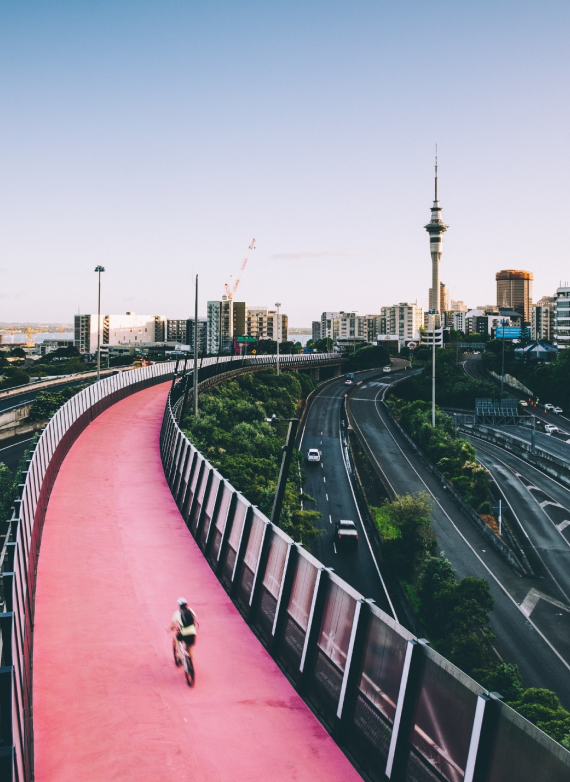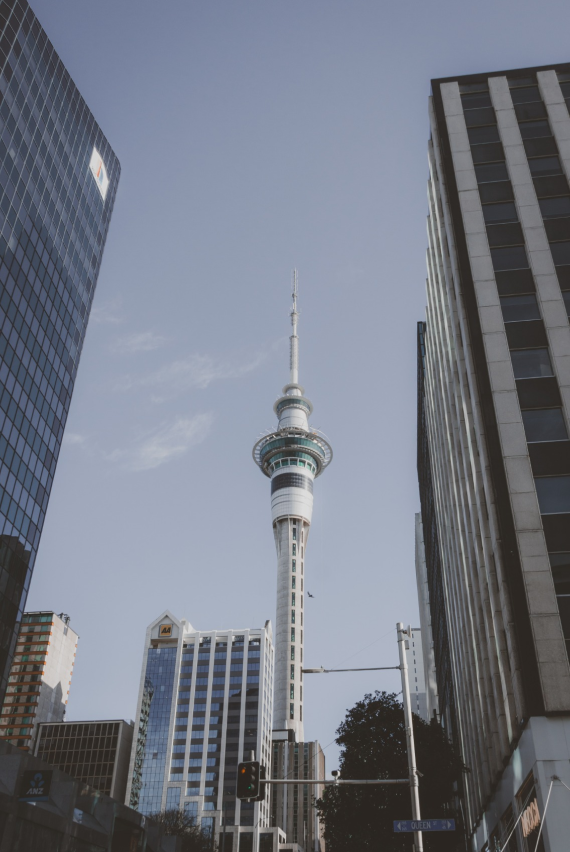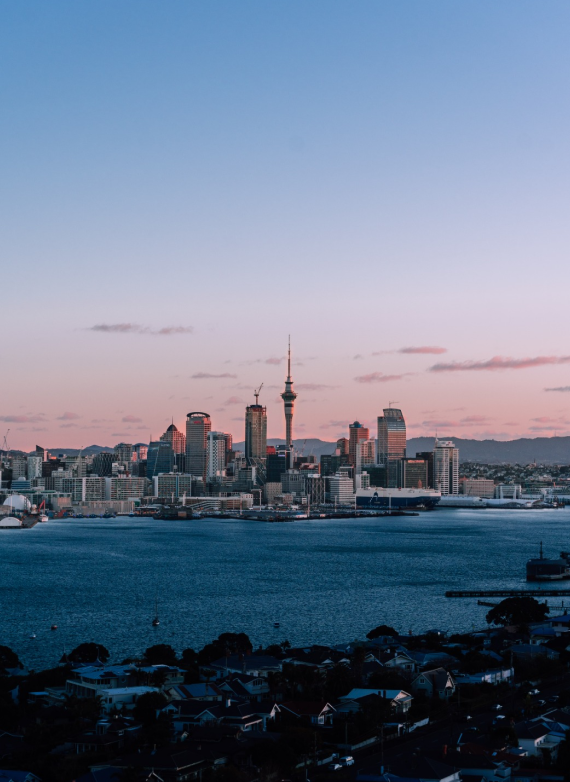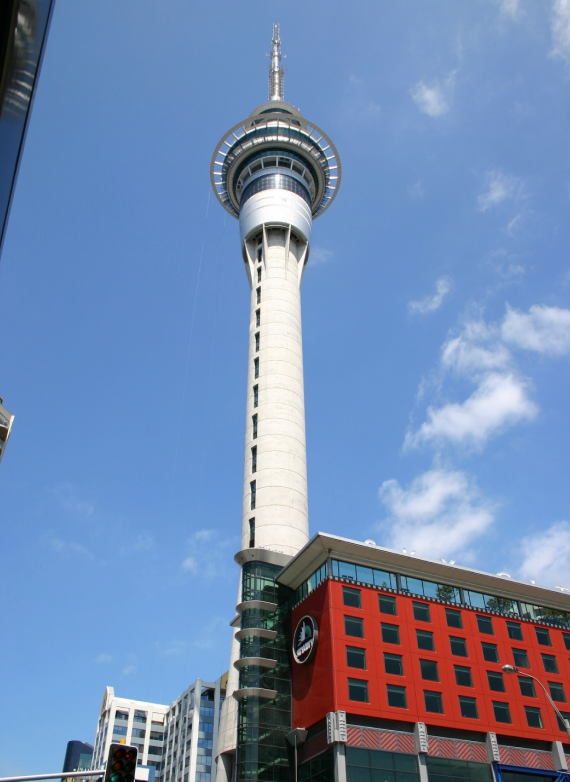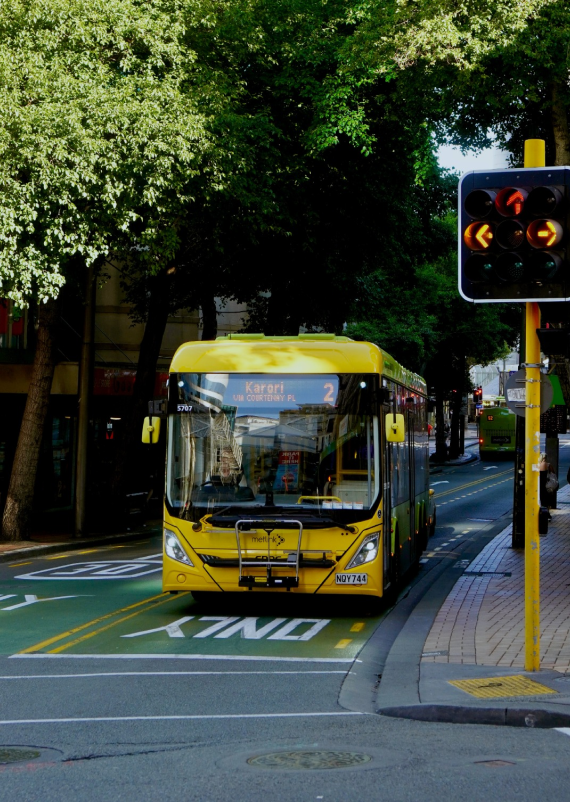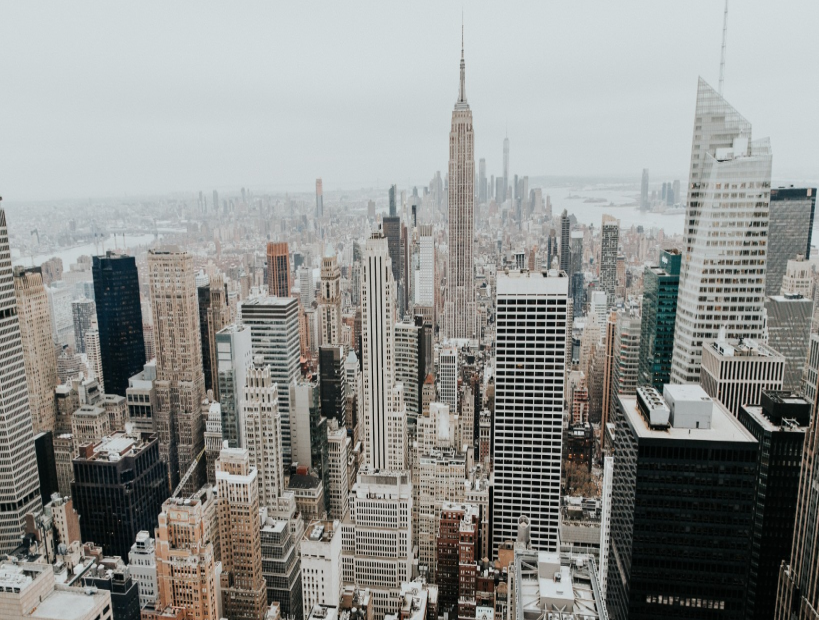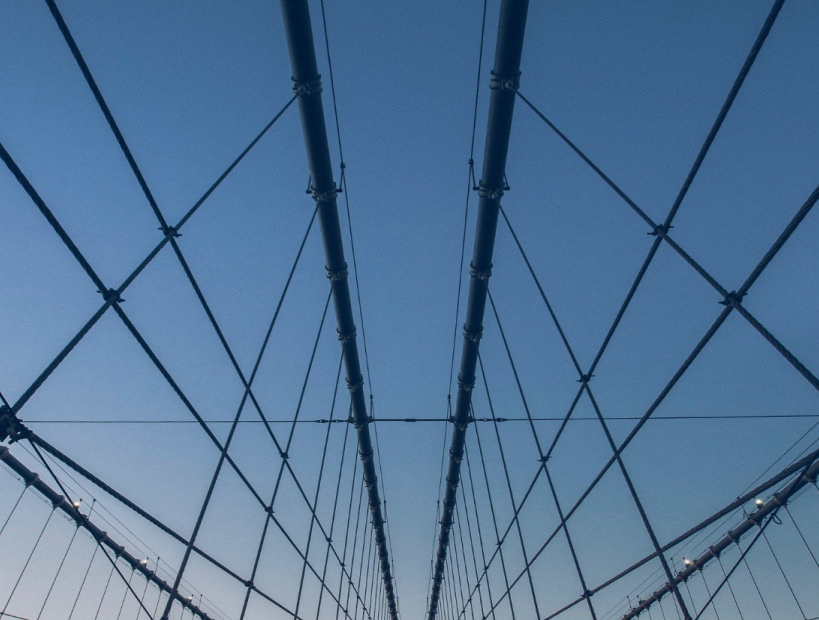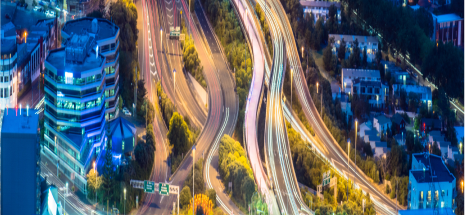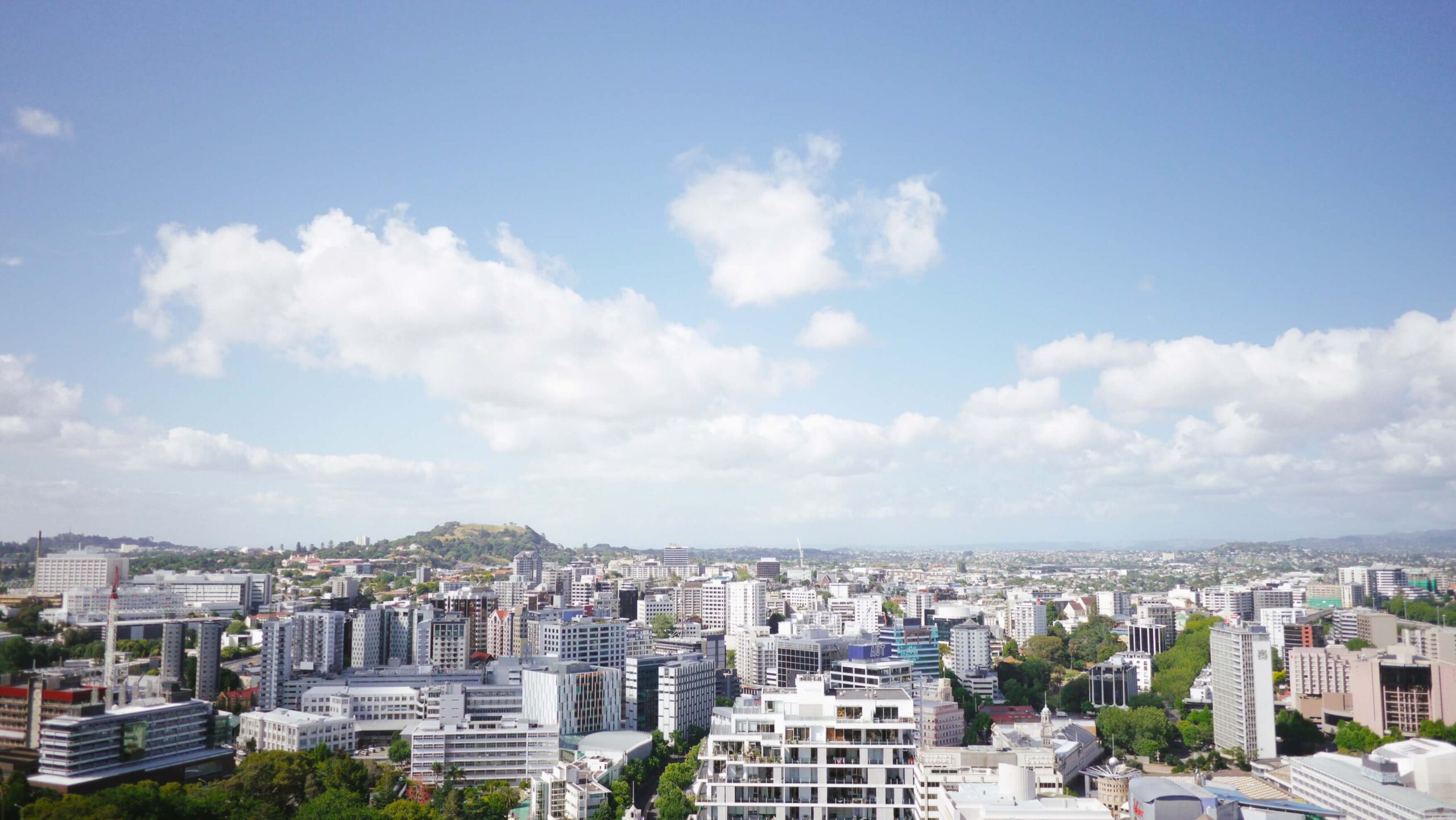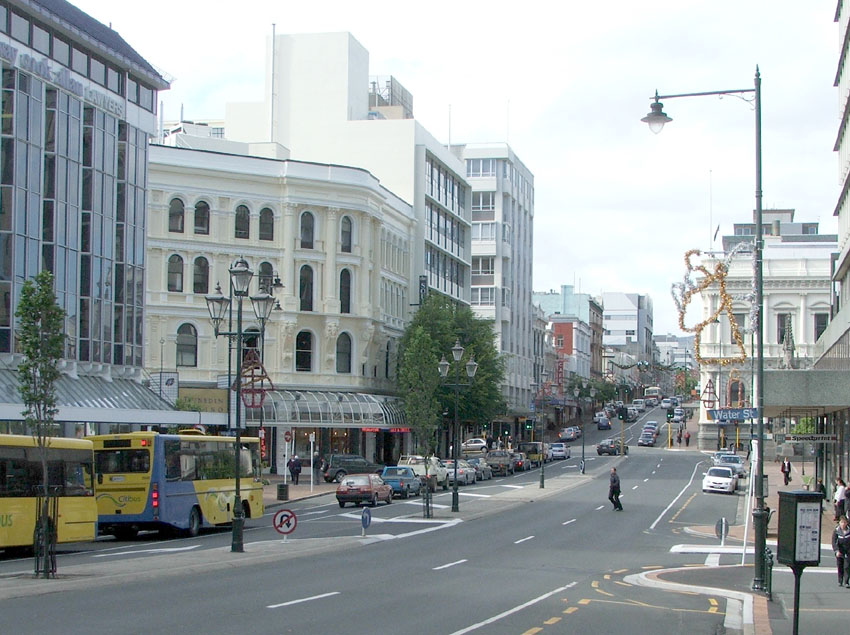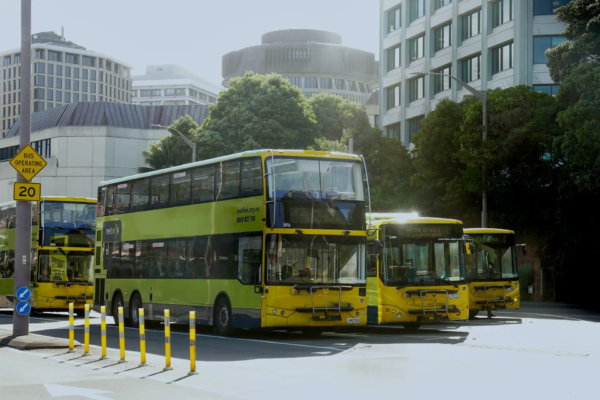2 Public Transport services
2.1 Improvements
2.1.1 Description
Public transit service improvements include increased service speed and frequency, route rationalization, reduced crowding, better cleaning and climate control, better service integration (such as better connections), more convenient navigation and payment systems, more comfortable vehicles and stops/stations, targeted discounts, and on-board amenities such as cupholders and on-board wifi.
Travel emission impacts vary depending on the type of improvement, traveler demographics and travel conditions. The elasticity of transit use with respect to transit service frequency averages 0.5, meaning that each 1.0% increase in service (measured by transit vehicle mileage or operating hours) increases average ridership by 0.5%. Significant comfort and convenience improvements and amenities are likely to increase ridership by 10% to 50%, depending on conditions and demographics.
2.1.2 Type of travel affected
Public transit service improvements can attract urban commute trips and longer-distance intercity travel.
2.1.3 How travel and emission effects can be measured and modelled
The effects of each component of PT service can measured separately and modelled as such or the modelling can be simplified by converting each service component into an equivalent travel time to create a generalized travel cost function eg, an additional PT transfer is estimated to be equivalent to an extra 12 min on-board (Petrik & Martinelli, 2017).
Transport models that only consider transit travel time and fare prices can be improved to account for service quality and case studies can be used to test the effects of specific improvements and amenities.
Travel impacts of transit encouragement strategies can be evaluated by comparing the non-service components of generalized costs (travel time and incremental expenses per trip) of transit and driving to calculate a transit competitiveness ratio. The higher this ratio the relatively less attractive is transit compared with driving.
Another major study found that high quality transit (ICF 2010):
- Directly reduces 2% of VMT, transportation fuel use and GHG emissions.
- By stimulating compact development, indirectly reduces 1-21% of VMT, transportation fuel use and GHG emissions compared to a hypothetical scenario without transit.
- Reduces 8% of aggregate VMT, transportation fuel use and GHG emissions in U.S. cities.
- Adding a rail station to a neighborhood that did not previously have rail access is associated with a 9% increase in activity density (combined population and employment density) within a 1-mile radius of the rail station. This causes a 2% reduction in VMT, transport fuel use and emissions.
2.1.4 Secondary impacts
Improving public transit service quality directly benefits users, and by reducing peak-period automobile travel provides many community benefits.
The resulting net increase in person-km (rather than VKT) that results from the higher PT service also increases agglomeration effects and improves the wellbeing that comes from better connected communities.
Associated issues with service provision (and rider growth) are the incentive structure and the responsibility split between the public authority and the operator, who is typically from the private sector. Most influencers of patronage are reported to be beyond the control of the operator (Wong & Hensher, 2021).
2.1.5 Key Information sources
DeRobertis, Michelle et al. (2020), Characteristics of Effective Metropolitan Areawide Public Transit: A Comparison of European, Canadian, and Australian Case Studies, Mineta Transportation Institute (https://transweb.sjsu.edu); at https://bit.ly/3nRmBin. This study identified institutional and operational factors, including abundant, frequent and affordable service, that leads to high transit ridership.
King County Metro (2021), Metro’s 2021 Transit Speed & Reliability Guidelines and Strategies, King County Metro (https://kingcountymetro.gov); at https://bit.ly/3LOTnvD. This guidebook identifies practical ways to improve public transit speed and reliability, so it is more competitive with automobile travel.
Orange¸ Gris (2012), Improving Bus Service: Modest Investments to Increase Transit Ridership, Transport Canada (www.tc.gc.ca); at www.fcm.ca/Documents/tools/GMF/Transport_Canada/ImprovingBusService_EN.pdf. This guide identifies practical ways to improve urban and suburban bus services in small to medium-sized communities.
Petrik, O., & Martinelli, L. (2017). Shared Mobility Simulations for Auckland (p. 116). https://doi.org/10.1007/s40336-016-0211-x
Walker, Jarrett (2015), Explainer: The Transit Ridership Recipe, Human Transit (www.humantransit.org); at https://humantransit.org/basics/the-transit-ridership-recipe. This article describes specific ways to improve public transit service quality and increase ridership.
Wong, Y. Z., & Hensher, D. A. (2021). Institutional reform in the bus and coach sector for a new decade. A summary of the 2019 Thredbo conference on land passenger transport.
Zamudio, Alex and Eric Swenson (2022), Transit Prioritization Tools and Practices, Institute of Transportation Engineers (www.ite.org); at https://bit.ly/38zZuWP. This short paper summarizes examples of transit prioritization in urban corridors.
2.2 Enhanced Bus Networks
2.2.1 Description
Increasing the frequency of buses and setting routes to minimise access time are two ways to increase the service component of bus networks (see PT Service Improvements). These service improvements can reduce emissions thanks to an increasing mode share of public transit and reduced transport activity on less efficient modes. However, increased frequency and larger networks also increase costs and, for non-electric buses, increase emissions from the bus network itself. A balancing act is required to optimise the bus network.
Case studies of bus network enhancements show that carbon emissions reductions from non-electric bus networks can often be substantial, including: -13% in Dalian, China, by implementing optimal skip-stop services (Tang, 2020); up to -50% in Barcelona, Spain, by adjusting the network structure, routes and timetables, with no significant change in user costs or average travel times (Griswold, 2017); and -66% in San Francisco, United States, by optimising the MUNI system (Madanat, 2016).
Multi-modal hubs will encourage the use of sustainable modes to access bus services - and for the onward journey - and can help increase bus ridership. Measures can include:
- The provision of respective infrastructure, such as cycling lanes to/from bus stations or stops, as well as secure and easily accessible bicycle or shared vehicle parking facilities.
- The integration of the bus system with public (shared) vehicle schemes and other public transport services by integrated ticketing, or ideally, comprehensive Mobility as a Service (MaaS) solutions.
Existing assessments of bus projects offer critical lessons for agencies to anticipate and overcome practical and political challenges when planning for new and/or enhanced bus services:
- Consult with users and stakeholders.
- Retain route planning under public authority.
- Provide a dedicated planning team with the data and resources.
- Involve high-level decision makers to foster collaboration between agencies.
- Plan for expansion, prepare contingency plans and adapt services to revealed demand.
- Design operator contracts to enhance competition, align incentives with major performance metrics and avoid renegotiations that tend to favour operator profits.
- Separate ownership of assets from operating concessions to facilitate competitive tendering and investment in clean technologies.
2.2.2 Type of travel affected
General passenger travel, especially from/to currently poorly serviced areas and during non-peak periods.
2.2.3 How travel and emission effects can be measured and modelled
As per Public Transport Service Improvements.
2.2.4 Secondary impacts
Public transport systems contribute to negative externalities beyond climate change, such as local air pollution, and positive externalities, like providing access for those who cannot drive. Failure to account for other externalities when redesigning a bus network could result in adverse effects.
Optimising routes and frequencies to reduce carbon emissions may entail service cuts in low-demand areas, which could have severe adverse effects on accessibility and social equity. For example, this was an issue with the major reform of bus services in Santiago de Chile in 2007, with job losses following increased travel times on some routes. The reform focused on cutting operating costs by introducing a hub and spoke system to concentrate passenger flows, regardless of end-to-end travel times. Subsequent reforms with broader objectives have resolved the issue.
Bus rapid transit (BRT) networks couple all the enhanced bus system features discussed here with physical infrastructure to increase capacity and improve operations. BRT systems can, however, be somewhat less flexible than traditional bus systems and require substantial street space for dedicated lanes and stations.
Measures that encourage the use of bus services via better integration and enhanced accessibility of the bus network can increase bus ridership. Examples include creating multi-modal hubs or public transport stops via respective infrastructure and service provision (eg, easy access to shared vehicle systems or other public transport modes) or digital solutions (eg, integrated ticketing, Mobility as a Service).
2.2.5 Key Information sources
Arbex R.O. and Da Cunha C.B. (2015) Efficient transit network design and frequencies setting multi-objective optimisation by alternating objective genetic algorithm, https://www.sciencedirect.com/science/article/abs/pii/S0191261515001435
Chen et al. (2017) Does Operation Scheduling Make a Difference: Tapping the Potential of Optimized Design for Skipping-Stop Strategy in Reducing Bus Emissions, https://www.mdpi.com/2071-1050/9/10/1737
Cipriani E., Gori S., and Petrelli M. (2012) A bus network design procedure with elastic demand for large urban areas, https://link-springer-com.libproxy.mit.edu/article/10.1007/s12469-012-0051-7
Geurs K. T., La Paix L., Van Weperen S. (2016) A multi-modal network approach to model public transport accessibility impacts of bicycle-train integration policies, https://etrr.springeropen.com/articles/10.1007/s12544-016-0212-x
Global Mass Transit (2017) Transantiago reforms, Chile: Preparing for Version 2.0, https://www.globalmasstransit.net/archive.php?id=28637
Griswold J.B. et al. (2017) Optimising Urban Bus Transit Network Design Can Lead to Greenhouse Gas Emissions Reduction, https://www.frontiersin.org/articles/10.3389/fbuil.2017.00005/full
Griswold J.B., Madanat S., Horvath A. (2013) Tradeoffs between costs and greenhouse gas emissions in the design of urban transit systems, https://iopscience.iop.org/article/10.1088/1748-9326/8/4/044046/meta
Guihaire V. and Hao J.-K. (2008) Transit network design and scheduling: A global review, https://www.sciencedirect.com/science/article/abs/pii/S0965856408000888
Gutiérrez-Jarpa G. et al. (2013) Rapid transit network design for optimal cost and origin-destination demand capture, https://www-sciencedirect-com.libproxy.mit.edu/science/article/pii/S0305054813001706
Hook W. et al. (2010) Carbon Dioxide Reduction Benefits of Bus Rapid Transit Systems: Learning from Bogotá, Colombia; Mexico City, Mexico; and Jakarta, Indonesia, https://journals.sagepub.com/doi/abs/10.3141/2193-02
Hosapujaria A.B. and Verma A. (2013) Development of a Hub and Spoke Model for Bus Transit Route Network Design, https://core.ac.uk/download/pdf/82445141.pdf
Hurtubia, R. and J. Leondhardt (2021) The Experience of Reforming Bus Concessions in Santiago de Chile, https://www.itf-oecd.org/sites/default/files/docs/reforming-bus-concessions-santiago-de-chile.pdf
Iliopoulou C. (2019) Electric Transit Route Network Design Problem: Model and Application, https://journals.sagepub.com/doi/abs/10.1177/0361198119838513
ITF (2020) Reforming Public Transport Planning and Delivery, https://www.itf-oecd.org/reforming-public-transport-planning-and-delivery
ITF (2021) Transport Climate Action Directory – Enhanced bus networks. https://www.itf-oecd.org/policy/enhanced-bus-networks
A summary of bus network enhancement effects (some of which is repeated above)
Jain D., and Tiwari G. (2016) How the present would have looked like? Impact of non-motorised transport and public transport infrastructure on travel behavior, energy consumption and CO2 emissions–Delhi, Pune and Patna, https://www.sciencedirect.com/science/article/pii/S2210670716300014?casa_token=Hp5hT16refwAAAAA:1KyPZBfy87teLiVt-ai-vWPxr-blG1bhlJIy6Nk-FF5rlL4MkUNlLvzhUb92WFr9jq1g3GEZJ34
Jha S.B., Jha J.K., Tiwari M.K. (2019) A multi-objective meta-heuristic approach for transit network design and frequency setting problem in a bus transit system, https://www.sciencedirect.com/science/article/abs/pii/S0360835219301111
Jovanović A.D., Pamučar D.S., Pejčić-Tarle S. (2014) Green vehicle routing in urban zones – A neuro-fuzzy approach, https://www.sciencedirect.com/science/article/abs/pii/S0957417413009275
Madanat, S., Horvath, A., Mao, C., & Cheng, H. (2016). Potential Greenhouse Gas Emission Reductions from Optimizing Urban Transit Networks. UC Berkeley: Institute of Transportation Studies at UC Berkeley. Retrieved from https://escholarship.org/uc/item/25x1b693
McCarthy J. (2007) In Chile, Commuters Sue City over Transit System, https://www.npr.org/templates/story/story.php?storyId=15100976
Peña D. et al. (2017) Multiobjective Optimization of Greenhouse Gas Emissions Enhancing the Quality of Service for Urban Public Transport Timetabling, https://ieeexplore.ieee.org/abstract/document/8241267
Pternea M, Kepaptsoglou K., Karlaftis M.G. (2015) Sustainable urban transit network design, https://www.sciencedirect.com/science/article/abs/pii/S096585641500110X?via%3Dihub
Sharma S. and Mathew T.V. (2011) Multiobjective Network Design for Emission and Travel-Time Trade-off for a Sustainable Large Urban Transportation Network, https://journals.sagepub.com/doi/abs/10.1068/b37018
Tang C, Ceder A, Ge Y-E, Wu N. Optimal Operational Strategies for Multiple Bus Lines Considering Passengers’ Preferences. Transportation Research Record. 2020;2674(5):572-586. https://doi.org/10.1177/0361198120917159
Wardman M. (2014) Valuing Convenience in Public Transport - Roundtable Summary and Conclusions, https://www.itf-oecd.org/sites/default/files/docs/dp201402.pdf
Zhang et al. (2017) Analysis of an optimal public transport structure under a carbon emission constraint: a case study in Shanghai, China, https://link.springer.com/article/10.1007/s11356-017-0660-4
2.3 On-demand Public Transport
2.3.1 Description
On-demand transport research has focused, up to now, on the operational specification of services and is targeted at niche markets in urban areas, and some low-density services in peri-urban or rural areas. As a niche market, service research does not bring in too much evidence about CO2 mitigation potential. Nevertheless, research conducted by ITF on shared mobility in recent years, through a combination of stated preferences and optimisation-simulation tools, assessed a market share potential that can vary between 5 to 20% of the metropolitan travel activity, but higher shares for long commuting travel. A significant share of the demand of these services derives from the integration with heavy public transport, through deploying effective and efficient feeding services to rail and metro.
New Zealand examples of public on-demand PT services are those provided in Timaru - where the initial response to the service was a 30% increase in PT, and in Devonport Auckland - where 43% of rides were a switch from private motor vehicles. Both examples were small scale.
Paratransit (in US) or community transport (in UK) is another form of PT that typically caters for people with disabilities that make other forms of transport difficult or impossible. The service may be provided on-demand (like a taxi) or along scheduled routes (like a bus) and may include a public subsidy.
2.3.2 Type of travel affected
General urban passenger transport, including access to wider PT services
2.3.3 How travel and emission effects can be measured and modelled
The average load factors tested and potential small percentage of empty kilometres of these vehicles (~10%) can lead, with average occupancy levels around 7-10 passengers and vehicles up to 16 seated passengers, to CO2 emissions per passenger-km of 4-7 smaller than the average private vehicle. Assuming a mode share of around 20%, 50% of them switched from car can lead to CO2 reductions between 10-20%. Moreover, if these vehicles replace conventional large buses with low occupancy levels either to feed public transport or for direct service, these reductions can also produce an additional 5-10% CO2 saving.
2.3.4 Secondary impacts
The increased accessibility of these services may promote urban sprawl. Policies to avoid this effect are required.
The increased mobility for people who are otherwise travel-constrained provides significant wellbeing improvements.
There have been many on-demand operations attempted over 40 years and many have subsequently ceased, signifying the costly nature of the service and the risks involved with any such ventures (Currie & Fournier, 2020).
2.3.5 Key Information sources
Auckland Transport. (2019). On-demand and shared mobility roadmap. Auckland Transport. https://at.govt.nz/media/1981832/j004697-on-demand-shared-mobility-roadmap_v7_compressed.pdf
City of Chicago. (2019). Roadmap for the Future of Transportation and Mobility in Chicago. https://www.chicago.gov/content/dam/city/depts/mayor/PDFs/21755_37_AF_MobilityReport.pdf
Currie, G., & Fournier, N. (2020). Why most DRT/Micro-Transits fail–What the survivors tell us about progress. Research in Transportation Economics, 83, 100895.
This paper reviews demand responsive transit (DRT) systems performance with particular focus on failure rates. Results show DRT is very failure prone; 50% last less than 7 years, 40% last less than 3 years, and about a quarter fail within 2 years. In the UK, 67% of DRTs have failed, and in Australasia, 54%. Results show a strong link between failure and higher costs.
ITF (2021) Transport Climate Action Directory – On-demand public transport. https://www.itf-oecd.org/policy/demand-public-transport
2.4 Enhanced Urban Rail Infrastructure
2.4.1 Description
Urban rail systems can come in different forms:
- Heavy commuter rail lines either run on dedicated high-capacity tracks and infrastructure or share the same tracks with other rail services.
- Metro systems are completely segregated from other traffic and provide high frequencies and capacity; they generally have extensive segments either underground or elevated in viaducts.
- Light rail systems typically run on the surface, sometimes including elevated platforms or underground sections; sometimes they share space with cars, buses and other vehicles.
Urban rail allows for, and is especially suited to, dense cities and regions where it can achieve efficiency gains and economic benefits from agglomeration effects. It provides the highest urban public transport capacity, allowing the transport of large volumes of passengers while minimising land use, relieving road congestion, improving local air quality, and reducing accidents and fatalities. It is the only motorised transport mode that is extensively electrified and thus can have zero tailpipe emissions (are all NZ trains electric?). Urban rail can take advantage of the growing share of renewable electric energy as well as from the development of traction batteries and autonomous driving equipment for road vehicles.
For public transport to truly be an attractive alternative to private motoring, and for any notable level of modal shift to occur, it is necessary to improve public transport of an inferior quality to an appropriate service and quality level. The different urban rail systems offer an array of solutions for reliable, frequent, high-quality public transport and high throughput capacity. Enhancing the rail systems’ performance can take place through very different type of investments, from "hard" investment in new infrastructure to, for example, a new traffic management system that improves the capacity of an existing system (eg, going driverless for metro). In several countries, cities have used investments on a project for a new, modern rail-borne public transport system as an opportunity to redefine goals in terms of urban planning and land use, through the rehabilitation, modernisation or restructuring of the entire urban context.
2.4.3 How travel and emission effects can be measured and modelled
As with other forms of PT, the cost to riders can be assessed as the combined fare and service function, either as a generalised travel cost or generalised travel time. Rider response is then the demand elasticity to generalised cost.
The emissions reduction is typically then reduced private vehicle emissions that result from any mode shift to trains as, where urban rail is electrified, its tailpipe emissions are zero. Climate externalities from electric rail are zero according to the European "Handbook on the external costs of transport".
By fostering higher-density development, rail indirectly also contributes towards urban forms that favour more public transport use, non‑motorised modes and greater overall transport efficiency. For instance, public transport-oriented compact cities, combined with improved infrastructure for non‑motorised transport, could reduce greenhouse gas intensities by 20-50% compared with 2010 levels. Controlling for other factors, the difference in transport intensity between high- and low-density areas can be more than 40% in vehicle-kilometres travelled per capita.
Passenger rail services will especially contribute to CO2 emissions reductions where load factors are high (ie, there is sufficient demand) and where electricity powering the rail services stems from renewable energy sources.
2.4.4 Secondary impacts
Urban rail, which often forms the backbone of a city’s public transport system, can yield benefits from agglomeration effects. Other gains can include fewer accidents, less congestion and more efficient land use. Rail can also be less noisy than road transport systems.
Rail projects can also contribute to urban regeneration. For example, the opening of Line D of Lyon’s metro system quadrupled the rate of urban regeneration in the corridor it served. The proportion of new or renovated buildings for commercial purposes rose to 60% compared with 13% elsewhere.
Because of its capital-intensive nature, urban rail requires very high throughput in order to achieve its environmental and economic goals. Investment in rail infrastructure is expensive, but often provides long-term economic and environmental benefits.
Noise is a consequence of all major modes of transport and is one of the key concerns for people living near transport infrastructure.
Urban rail infrastructure can lead to separation effects and time losses for pedestrians. It can also be a physical barrier curtailing accessibility to certain urban areas (especially so in the case of surface-level heavy rail commuter systems).
2.4.5 Key Information sources
ADEME (Environment and Energy Management Agency) France (2012) CO2 information for transport services, http://www.objectifco2.fr/docs/upload/86/Information_CO2_ENG_Web-2.pdf
Batty, P., R. Palacin, and A. González-Gil (2015) Challenges and opportunities in developing urban modal shift, https://doi.org/10.1016/j.tbs.2014.12.001
CE Delft, RICARDO-AEA (2008 - 2014) Handbook on estimation of external costs in the transport sector, https://ec.europa.eu/transport/sites/transport/files/themes/sustainable/doc/2008_costs_handbook.pdf; https://ec.europa.eu/transport/sites/transport/files/themes/sustainable/studies/doc/2014-handbook-external-costs-transport.pdf
CER and UIC (2015) Rail Transport and Environment Facts and Figures, http://www.cer.be/publications/latest-publications/rail-transport-and-environment-facts-figures
European Commission (2019) Handbook on the external costs of transport - version 2019, https://ec.europa.eu/transport/themes/sustainable-transport/internalisation-transport-external-costs_en
Flyvbjerg, B., N. Bruzelius, and B. van Wee (2008) Comparison of Capital Costs per Route-Kilometre in Urban Rail, https://arxiv.org/abs/1303.6569
IEA in collaboration with UIC (2019) The Future of Rail Opportunities for energy and the environment, http://www.oecd.org/publications/the-future-of-rail-9789264312821-en.htm
IPCC (2014) Transport. In: Climate Change 2014: Mitigation of Climate Change. Contribution of Working Group III to the Fifth Assessment Report of the Intergovernmental Panel on Climate Change, https://www.ipcc.ch/site/assets/uploads/2018/02/ipcc_wg3_ar5_chapter8.pdf
ITF (2021) Transport Climate Action Directory – Enhanced urban rail infrastructure. https://www.itf-oecd.org/policy/enhanced-urban-rail-infrastructure
Müller, M., & Reutter, P. O. (2021). Course change: Navigating urban passenger transport toward sustainability through modal shift. International Journal of Sustainable Transportation, 1–25.
Modal shift measures need to play a crucial role in integrated approaches with land-use (avoid) and efficiency (improve) measures because they have the potential to significantly reduce car use and CO2 emissions and because they can produce comparatively fast effects – which makes modal shift measures first aid approaches to achieve a fast "bending of the curve" of excessive car use and growing CO2 emissions.
Rode, P. et al. (2014) Accessibility in Cities: Transport and Urban Form. NCE Cities Paper 03. LSE Cities. London School of Economics and Political Science, https://lsecities.net/wp-content/uploads/2014/11/LSE-Cities-2014-Transport-and-Urban-Form-NCE-Cities-Paper-03.pdf
UIC and IEA (2017) Railway Handbook on Energy Consumption and CO2 Emissions 2017 Edition Focus on passenger rail services, https://uic.org/uic-iea-railway-handbook
2.5 Integrated Ticketing
2.5.1 Description
Integrated ticketing facilitates public transport transfers across different modes, operators or geographic zones. Within this broad definition, it can take a number of forms, including a common payment mechanism, a single ticket on different operator services, a single ticket across different modes or combinations of these elements. Integrated ticketing often takes form as an electronic "smart ticket".
Benefits to users include ease of access and the ability to treat a public transport system as one single integrated system. In most cases, an integrated ticketing system will also involve integrated tariffs, where common pricing structures exist across different transport modes and operators. Integrated ticketing can also bring time savings, greater flexibility and convenience for customers, which can encourage public transport use.
2.5.3 How travel and emission effects can be measured and modelled
Integrated ticketing systems typically increase the modal share of public transport in the short and long term.
The introduction of integrated ticketing systems in a set of European cities accompanied an increase in public transport demand of between 4% over two years in Manchester, United Kingdom, and 33% over 18 years in Paris. It remains difficult to isolate the sole impact of integrated ticketing on the increased public transport demand, however.
2.5.4 Secondary impacts
By increasing the mode share of public transport, integrated ticketing conceivably generates benefits such as reduced congestion and reduced local air pollution. It typically also leads to greater convenience and passenger satisfaction.
Operators can use the data generated to improve operational efficiency and transport planning.
2.5.5 Key Information sources
Abrate, G., Piacenza, M. and Vannoni, D. (2009) The impact of Integrated Tariff Systems on public transport demand: Evidence from Italy. Regional Science and Urban Economics, Volume 39, Issue 2, March 2009, Pages 120-127, https://doi.org/10.1016/j.regsciurbeco.2008.05.014
Alhassan, I. B. (2021). Five empirical essays on the user perspective of the public transport ticketing system: Understanding effects, attitudes, and behavioural response to ticketing improvements [PhD Thesis]. University of Leeds.
Integrated ticketing has a positive effect on mode choice due to its synergistic effects in Swedish survey
Booz & Company (2009) The Benefits of Simplified and Integrated Ticketing in Public Transport, http://www.urbantransportgroup.org/system/files/general-docs/integratedticketingreportFINALOct09.pdf
Czerliński, M., & Bańka, M. S. (2021). Ticket tariffs modelling in urban and regional public transport. Archives of Transport, 57.
The power function best describes time tariffs relationship with demand.
DeRobertis, Michelle et al. (2020), Characteristics of Effective Metropolitan Areawide Public Transit: A Comparison of European, Canadian, and Australian Case Studies, Mineta Transportation Institute (https://transweb.sjsu.edu); at https://bit.ly/3nRmBin.
This study identified institutional and operational factors, including abundant, frequent and affordable service, that leads to high transit ridership.
FitzRoy, F. and Smith, I. (1998) Public transport demand in Freiburg: why did patronage double in a decade? https://doi.org/10.1016/S0967-070X(98)00024-9
FitzRoy, F. and Smith, I. (1999) Season tickets and the demand for public transport, http://onlinelibrary.wiley.com/doi/10.1111/j.1467-6435.1999.tb01443.x/epdf
Hirsch et al. (2000) Effects of fare incentives on New York City transit ridership, http://dx.doi.org/10.3141/1735-18
ITF (2021) Transport Climate Action Directory – Integrated ticketing. https://www.itf-oecd.org/policy/integrated-ticketing
Matas (2004) Demand and revenue implications of an integrated public transport policy: the case of Madrid, https://doi.org/10.1080/0144164032000107223
NEA (2003) Integration and regulatory structures in public transport. China transport topics; no. 14. Washington, DC: World Bank Group, http://documents.worldbank.org/curated/en/322961468019179668/Public-transport-service-optimization-and-system-integration
Pazzini, M., Lantieri, C., Vignali, V., Simone, A., Dondi, G., Luppino, G., & Grasso, D. (2022). Comparison between different territorial policies to support intermodality of public transport. Transportation Research Procedia, 60, 68–75.
Promotion of public transport at a city level and the introduction of a 3- or 7-days integrated ticket to be used for travelling around all the towns, within EU Inter-Connect Project.
PWC (2011) Smart & Integrated Ticketing Report for Scotland, https://www.transport.gov.scot/publication/smart-integrated-ticketing-report-for-scotland/
Rebelo et al. (?) Impact of anitegrated modal tariff on the mobility of low-income population in the Sao Paulo metropolitan region, https://www.google.fr/webhp?sourceid=chrome-instant&ion=1&espv=2&ie=UTF-8#q=IMPACT+OF+AN+INTEGRATED+MODAL+TARIFF+ON+THE+MOBILITY+OF+LOW-INCOME+POPULATION+IN+THE+S%C3%83O+PAULO+METROPOLITAN+REGION
Sharaby and Shiftan (2012) The impact of fare integration on travel behavior and transit ridership. Transport Policy, Volume 21, May 2012, Pages 63-70, https://doi.org/10.1016/j.tranpol.2012.01.015
Shows 4% to 40% range of ridership response to integrated fares amongst 7 cities between 1967 and 2001.
Taylor and Carter (1998) Maryland mass transit administration fare simplification: effects on ridership and revenue. Transportation Research Record: Journal of the Transportation Research Board, https://doi.org/10.3141/1618-15
2.6 Park and Ride Facilities
2.6.1 Description
Park and ride (P&R) facilities allow customers to park their vehicles on the edge of dense urban areas and use public transport (PT) – rail, buses or ferries – to reach their destination in the city centre. P&R facilities are often offered to users free of charge or at very low cost.
2.6.2 Type of travel affected
Typically commuting to and from work in the CBD (given that many P&R are near capacity, often early in the morning (Zhao et al., 2019)).
2.6.3 How travel and emission effects can be measured and modelled
The available literature shows that behavioural responses to P&R facilities are more complex than a simple interception and shortening of car trips. In response to the introduction of P&R facilities, previous car-only users may now decide to use PT for a part of their trip into the city centre; on the other hand, previous PT-only users may now decide to use their private car for a part of the trip; ie, to get to the P&R facilities.
Overall, the introduction of P&R facilities therefore does not necessarily result in CO2 benefits, especially if the P&R facility is connected to a road-based public transport system. For a rail-based P&R facility in The Hague, Netherlands, a CO2 benefit could be identified. The success of the scheme was attributed to the fact that the P&R facilities were relatively far outside the city centre, thereby intercepting city commuters early and replacing a large portion of their travel by the rail-based PT system.
2.6.4 Secondary impacts
P&R is typically successful in easing city-centre traffic congestion, thereby enhancing residents’ quality of life and reducing local air pollution. P&R facilities can also be successful in increasing urban accessibility by providing new transport alternatives to commuters. If adequate parking for vulnerable groups (such as the disabled) is supplied, equity in access to public transport can be increased.
Considering system-wide effects (ie, accounting for effects outside the city centre as well as inside), P&R facilities may increase overall car use and related impacts. For example, in Wellington, New Zealand, it was found that increasing parking capacity by 25% without any other changes resulted in increased use of the P&R facility, but that this use replaced more PT trips than car trips.
2.6.5 Key Information sources
Duncan, M. (2019). Would the replacement of park-and-ride facilities with transit-oriented development reduce vehicle kilometers traveled in an auto-oriented US region? Transport Policy, 81, 293–301.
Implies replacing a P&R facility with a moderately dense housing (100 units per hectare) would result in a net VKT reduction (or at least no increase in VKT).
ITF (2021) Transport Climate Action Directory – Park and ride facilities. https://www.itf-oecd.org/policy/park-and-ride-facilities
ITF (2021), Reversing Car Dependency: Summary and Conclusions, ITF Roundtable Reports, No. 181, OECD Publishing, Paris. Karamychev, V. and van Reeven, P. (2011) Park-and-ride: Good for the city, good for the region? https://doi.org/10.1016/j.regsciurbeco.2011.03.002
Kimpton, A., Pojani, D., Sipe, N., & Corcoran, J. (2020). Parking behavior: Park ’n’ride (PnR) to encourage multimodalism in Brisbane. Land Use Policy, 91, 104304.
P&R should influence modal choice by making the transfer between car and rapid transit more convenient yet this base assumption rarely matches the empirical reality. P&R tend to attract PT users from near-by suburbs.
Meek, S., Ison, S. and Enoch, M. (2008) Role of Bus‐Based Park and Ride in the UK: A Temporal and Evaluative Review. https://doi.org/10.1080/01441640802059152
Meek, S., Ison, S. G., & Enoch, M. (2008). Park and ride: Lessons from the UK experience (Version 1). Loughborough University. https://hdl.handle.net/2134/4352
2011 paper showed P&R facilities in the UK contribute to the increase of VKT.
Mingardo, G. (2013) Transport and environmental effects of rail-based Park and Ride: evidence from the Netherlands. Journal of Transport Geography, Volume 30, June 2013, Pages 7-16 https://doi.org/10.1016/j.jtrangeo.2013.02.004
Nguyen-Phuoc, D. Q., Young, W., Currie, G., & De Gruyter, C. (2020). Traffic congestion relief associated with public transport: State-of-the-art. Public Transport, 12(2), 455–481.
Discussion of short-term responses to disruption. Raises the issue of P&R effect on car ownership – which would imply a limit on VKT reduction.
Parkhurst, G. (2000) Influence of bus-based park and ride facilities on users’ car traffic. https://doi.org/10.1016/S0967-070X(00)00006-8
Parkhurst, G. and Meek, S. (2014) The Effectiveness of Park-and-Ride as a Policy Measure for more Sustainable Mobility. Chapter 9 in Ison, S. & Mulley, C. (Eds) Parking Issues and Policies. Emerald, 185-211. http://eprints.uwe.ac.uk/26149/7/Park-and-RidePolicytext.pdf
Saeidizand, P., Fransen, K., & Boussauw, K. (2022). Revisiting Car dependency: A worldwide analysis of car travel in global metropolitan areas. Cities, 120, 103467.
Density, public transport supply and demand, car ownership, fuel price and level of congestion are important predictors of car use. However, although these variables are significantly associated with car travel in metropolitan areas, they do explain variance to a limited extent only.
Vincent, M. 2007. Park and ride: Characteristics and demand forecasting. Land Transport NZ Research Report 328. 131 pp. https://www.nzta.govt.nz/assets/resources/research/reports/328/docs/328.pdf
Wallis, I, Ballantyne, J., Lawrence A., and Lupton, D. (2014) Economic benefits of park and ride. NZ Transport Agency research report 562. 201pp. http://www.nzta.govt.nz/assets/resources/research/reports/562/docs/562.pdf
Zhao, X., Chen, P., Jiao, J., Chen, X., & Bischak, C. (2019). How does ‘park and ride’ perform? An evaluation using longitudinal data. Transport Policy, 74, 15–23.
P&R is a practical way to attract bus riders, especially young adults, senior citizens, and low-income people to public transit. Dense urban development is encouraged for the full utilization of P&R lots.

